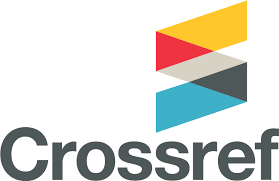Organizational form, gender structure of general legal representatives and company profitability: evidence from Serbian companies
DOI:
https://doi.org/10.5937/bizinfo2302047DKeywords:
company performance, profitability, gross profit margin, form of organizationAbstract
This research paper is a part of a wider project in which the influence of various factors on the performance of the company is analyzed. The impact of the gender structure of general legal representatives as well as the form of organization of the company on profitability expressed through the average gross profit margin was studied. The five-year period from 2018 to 2022 was studied, in which data from the profit and loss statements of a total of 192 entities were analyzed. The sample presents six groups classified by the form of organization of companies that can be encountered in business practice. All statistical analyzes were carried out in the IBM SPSS 23 program. The research hypothesized a statistically significant impact of the difference in the gender of general representatives on the profitability of the company, which was rejected, and a hypothesis of significant differences regarding the impact of the form of organization of the company on the profitability expressed by the average gross profit margin, which was accepted. Research into factors that can affect the profitability of the analyzed subjects should enable the making of better management decisions in order to realize better and better performance of the company.
Downloads
References
Antony, J.P., & Bhattacharyya, S. (2010). Measuring organizational performance and organizational excellence of SMEs – Part 1: A conceptual framework. Measuring Business Excellence, 14(2), 3-11. https://doi.org/10.1108/13683041011074209
Aulová, R., Pánková, L., & Rumánková, L. (2019). Analysis of selected profitability ratios in the agricultural sector., 11(665-2019-4010),. AGRIS on-line Papers in Economics and Informatics, 11(665-2019-4010), 3-12. http://dx.doi.org/10.22004/ag.econ.294160
Cohen, J. (1988). Statistical power analysis for the behavioral sciences (2nd edn.). Hillsdale, NJ: Lawrence Erlbaum Associates.
Ezzamel, M., & Watson, R. (1993). Organizational form, ownership structure and corporate performance: A contextual empirical analysis of UK companies 1. British Journal of Management, 4(3), 161-176. https://doi.org/10.1111/j.1467-8551.1993.tb00056.x
Fulk, J., & DeSanctis, G. (1995). Electronic communication and changing organizational forms. Organization science, 6(4), 337-349. https://doi.org/10.1287/orsc.6.4.337
Greene, W.H. (2004). Profitability and efficiency in the US life insurance industry. Journal of Productivity Analysis, 21, 229-247. https://doi.org/10.1023/B:PROD.0000022092.70204.fa
Grifell-Tatje, E. (2011). Profit, productivity and distribution: Differences across organizational forms–The case of Spanish banks. Socio-Economic Planning Sciences, 45(2), 72-83. https://doi.org/10.1016/j.seps.2010.12.001
Guenther, D.A. (1992). Taxes and organizational form: A comparison of corporations and master limited partnerships. Accounting Review, 45, 17-45.
Idris, F., & Mohd Ali, K.A. (2008). The impacts of leadership style and best practices on company performances: Empirical evidence from business firms in Malaysia. Total Quality Management, 1-2, 165-173. https://doi.org/10.1080/14783360701602130
Johnson, L. (2012). Pluralism in Corporate Form: Corporate Law and Benefit Corps. Regent UL Review, 269.
Kaplan, R.S., & Norton, D.P. (2007). Using the balanced scorecard as a strategic management system. Harvard Business Review. Retrieved from https://hbr.org/2007/07/using-the-balanced-
Keatinge, R.R., Ribstein, L.E., Hamill, S.P., & Gravelle, M.L. (1991). The limited liability company: a study of the emerging entity. Bus. Law, 47, 375.
Kim, S., Karlesky, M.J., Myers, C.G., & Schifeling, T. (2016). Why companies are becoming B corporations. Harvard Business Review, 1-5.
Kodama, M. (2005). Knowledge creation through networked strategic communities: case studies on new product development in Japanese companies. Long Range Planning, 1, 27-49. https://doi.org/10.1016/j.lrp.2004.11.011
Kosová, R., Lafontaine, F., & Perrigot, R. (2013). Organizational form and performance: Evidence from the hotel industry. Review of Economics and Statistics, 95(4), 1303-1323. https://doi.org/10.1162/REST_a_00330
Munch, S. (2012). Improving the benefit corporation: How traditional governance mechanisms can enhance the innovative new business form. Nw. JL & Soc. Pol'y , 170.
Murray, J. (2011). Purpose with profit: Governance, enforcement, capital-raising and capital-locking in low-profit limited liability companies. U. Miami L. Review, 6, 1.
Osterwalder, A., Pigneur, Y., & Tucci, CL. (2005). Clarifying business models: Origins, present, and future of the concept. Communications of the association for Information Systems, 1. https://doi.org/10.17705/1CAIS.01601
Sardana, GD (2008). Measuring business performance: A conceptual framework with focus on improvement. Performance Improvement, 47(7), 31-40. https://doi.org/10.1002/pfi.20014
Smilor, R.W., Gibson, D.V., & Dietrich, G.B. (1990). University spin-out companies: technology start-ups from UT-Austin. Journal of business venturing, 1, 63-76. https://doi.org/10.1016/0883-9026(90)90027-Q
Soldić-Aleksić, J. (2018). Application of data analysis. Belgrade: Faculty of Economics, Belgrade.
Ssebunya, B.R. (2019). Sustainability Performance of Certified and Non-certified Smallholder Coffee Farms in Uganda. Ecological Economics, 154, 35-47. https://doi.org/10.1016/j.ecolecon.2018.09.004
Tabachnick, B.G., & Fidell, L.S. (2013). Using multivariate statistics. Boston: Pearson Education.
Vastola, A., Zdruli, P., D’Amico, M., Pappalardo, G., Viccaro, M., Di Napoli, F., ... & Romano, S. (2017). A comparative multidimensional evaluation of conservation agriculture systems: A case study from a Mediterranean area of Southern Italy. Land Use Policy, 68, 326-333. https://doi.org/10.1016/j.landusepol.2017.07.034
Wilcox, R. R. (2010). Fundamentals of modern statistical methods: Substantially improving power and accuracy (Vol. 249). New York: Springer. https://doi.org/10.1007/978-1-4757-3522-2
Downloads
Published
Issue
Section
License
Copyright (c) 2023 BizInfo (Blace) Journal of Economics, Management and Informatics

This work is licensed under a Creative Commons Attribution-NonCommercial 4.0 International License.
















